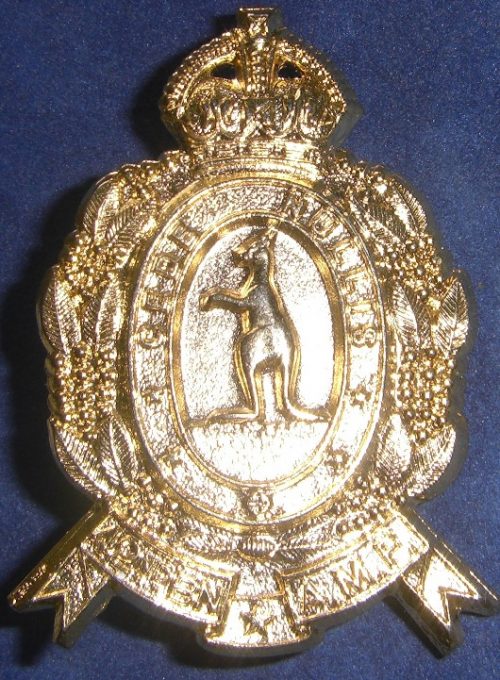Description
Description: 58th Battalion (Essendon, Coburg, Brunswick Rifles) – Brass & Enamel Collar Badge Pair – 1930 to 1942
Maker’s Name: N/A
Condition: Very Good
Comments: 58th Battalion (Essendon, Coburg, Brunswick Rifles) – Brass and Enamel Collar Badge Pair – 1930 to 1942 Complete with two lugs.
Guaranteed to be 100% genuine.
The 58th Battalion was originally raised as a unit of the First Australian Imperial Force (AIF) in Egypt on 17 February 1916 for service in World War I as part of the expansion of the AIF that took place at that time. In order to spread the experience gained through the AIF’s involvement in the Gallipoli campaign, the new units were formed by taking experiened men from other battalions and joining them with new recruits that were sent from Australia. The 58th Battalion drew its experienced personnel from the 6th Battalion while its new recruits came from Victoria. Together with the 57th, 59th and 60th Battalions, the 58th formed part of the 15th Brigade, which was attached to the 5th Australian Division.
At this time it was decided that the Australian infantry divisions would be transferred to Europe to fight in the trenches along the Western Front in France and Belgium. As the 5th Division was still forming it did not depart until later in the year and the 58th Battalion arrived in France 23 June 1916. The battalion experienced its first taste of fighting on the Western Front in July when it was involved in the Battle of Fromelles, being in reserve and providing medical stretcher parties. The reserve force, about half of the battalion, was brought into the battle at the climax of battle and lost a third of its strength to machine gun fire. The battalion was allocated defensive duties for the next 10 months before participating in the Polygon Wood on 26 September 1917, in reserve during the Villers-Bretonneux on 25 April 1918 and participated in the Amiens on 8 August, the Battle of Mont St Quentin and Peronne on 31 August and lastly during the Battle of St. Quentin Canal on 29 September. Placed in reserve for rest and reinforcement, the war ended before the battalion was to see further action with the battalion disbanded on 24 March 1919.
During its service during the war, the battalion lost 615 men killed and 1,550 men wounded. Members of the battalion received the following decorations: one VC, eight DSOs and one bar, one OBE, 20 MCs and two bars, 17 DCMs and one bar, 71 MMs and six bars, 30 MIDs and eight MSMs. Rupert Moon was the battalion’s only Victoria Cross recipient.
In 1921 it was decided that the Citizens Force would be re-organised along the lines of the AIF, adopting the numerical designations of AIF units and maintaining their battle honours in order to perpetuate these units. As a result of this, the battalion was raised again as the 58th Battalion (Essendon Regiment) in May 1921, attached to the 15th Brigade, then part of the 3rd Division and based in Melbourne. The battalion went through a number of name changes, 58th Battalion (Essendon Rifles), 58th Battalion (The Melbourne Rifles), 58th Battalion (Essendon Coburg & Brunswick Rifles) and 58th Battalion (Essendon, Coburg, Brunswick Regiment).
In 1929, following the election of the Scullin Labor government, the compulsory training scheme was abolished and in its place a new system was introduced whereby the Citizens Forces would be maintained on a part-time, voluntary basis only. The result of this change in recruitment policy was a significant drop in the size of the Army, with falling by almost 20,000 in one year as there was little prospect for training and as the financial difficulties of the Great Depression meant that few men were able to take time off civilian employment for military service. Consequently, the decision was made to disband or amalgamate a number of units. The 58th Battalion was one of the units chosen to be amalgamated and in 1930 it was joined with the 59th Battalion, to become the 58/59th Battalion (Essendon, Coburg, Brunswick/ Hume Regiment). They would remain linked for the next 16 years, seeing action in World War II in the South-west Pacific in 1943-45. They were disbanded on 23 February 1946.




